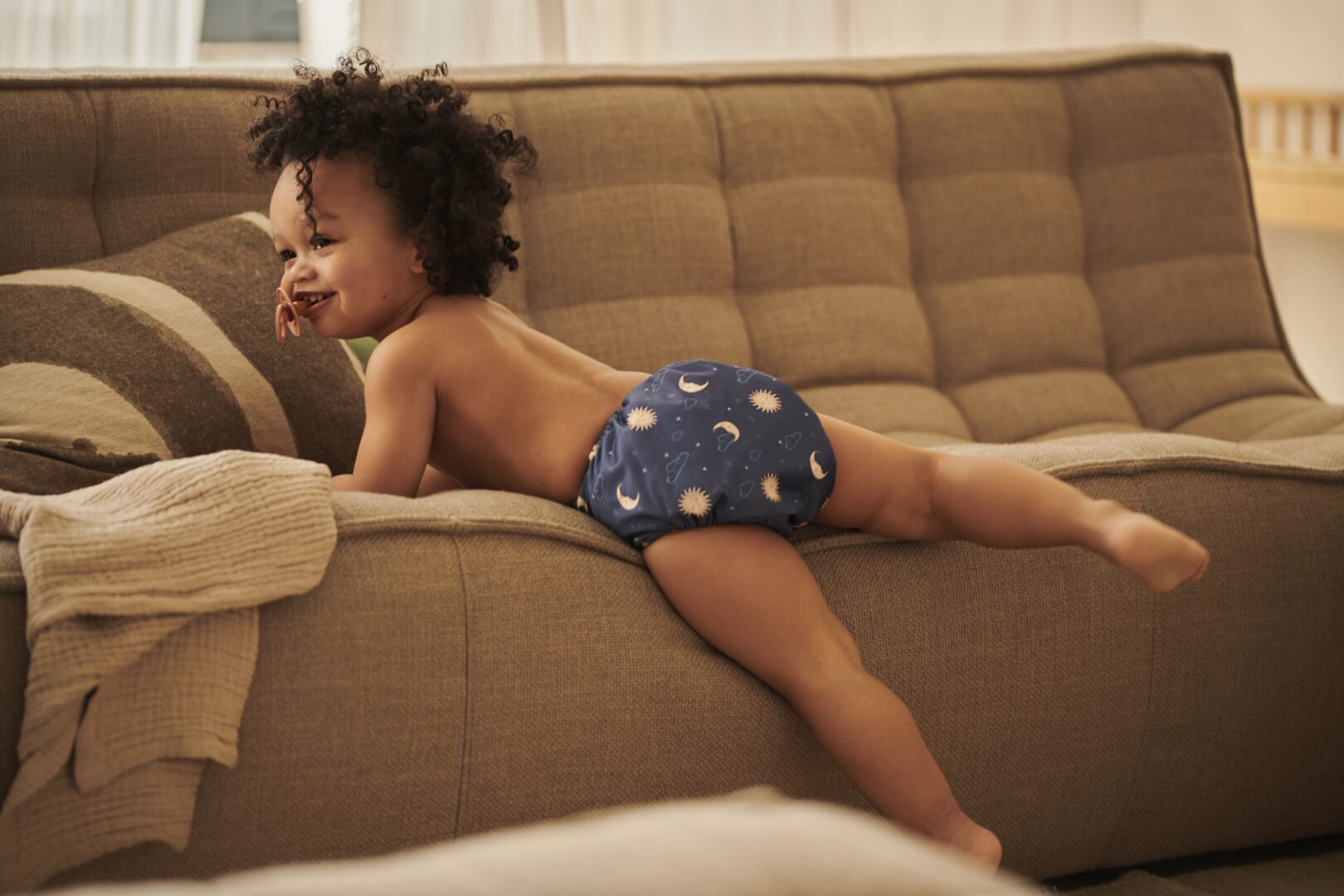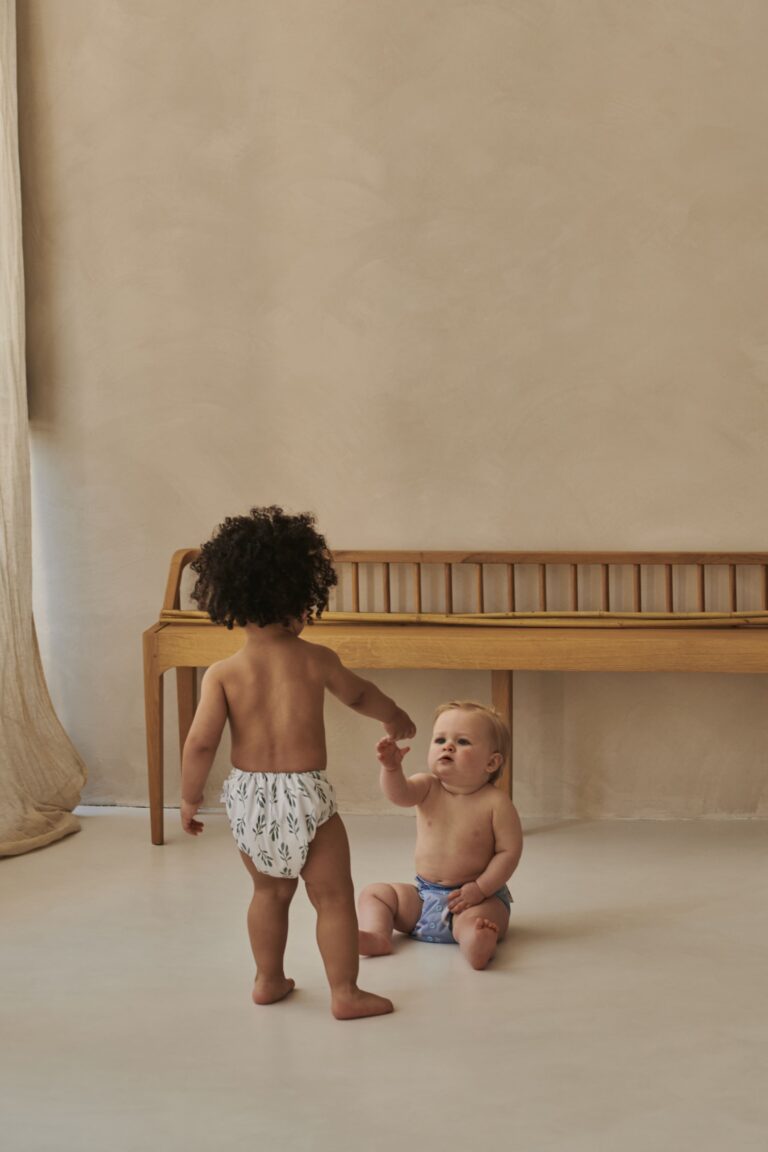
The advantages of using cloth nappies
There are many advantages that come with cloth diapering your baby. It is better for the planet, healthier on your baby's sensitive skin, helps the potty training process and it saves you a lot of money too.
Better for the planet
One baby alone goes through about 6000 nappies and it can take up to 500 years for a disposable nappy to decompose.
Nappy production is gigantic all around the world, and so is the overall impact on global energy and pollution. Disposable diapers are the third largest consumer item in landfills representing 30% of non-biodegradable consumer waste. If reusable nappies are used conscientious, single-use diapers use 20 times more land for production of raw materials and require three times more energy to make than reusable nappies.
Our goal is to leave only real footprints behind. If you use Happy Naps full time, you only need between 24 and 28 nappies, what means you will save 260kg of disposable diaper waste per baby per year. By swapping to reusables, your carbon footprint can be reduced by 40%, equivalent to 200kg of CO2.
With reusable nappies, you will never run out of nappies again which means you never have to run to the shop for diapers and there will be no need to cart stinky trash. Last but not least, you will raise awareness and inspire positive change for the planet.
Saves you money
Your child will go through approximately 2555 nappies in their first year of life alone. If your baby would wear single-use diapers until potty training time (around three years old), you are looking at spending at least €1056 on the cheapest disposables for those three years.
Happy Naps on the other hand are reusable, so once you buy your stash you have got them for your child’s entire nappy wearing life. A Happy Naps Full Time Bundle cost you €550. It may be a big investment, but it will definitely save you lots of money over time.
Reusable nappies are better for your pocket. You save minimum €506 and even more if you use your nappies with a second baby. Did you now that some municipalities subsidise 50% of the purchase value of Happy Naps? This means you can save even more!


Healthy bum
These days diaper rash occurs by 50% of all babies, while before the 50’s when disposable diapers did not exist yet, diaper rashes only occurred by 7% of all babies.
The reason why cloth nappies may cause fewer diaper rashes is that cloth diapers do not use the same chemical components as disposables. Happy Naps are free from these chemicals and don’t dry out the skin.
Our inserts are made of natural fibres (bamboo, hemp and organic cotton) and can be stuffed into the pocket of the nappy. The inner layer of a happy nappy is made of a high-quality, breathable, stay-dry fleece. Happy naps leave the skin naturally dry to minimise the chance on rashes. The outer layer is made of water resistant PUL and functions to keep the wetness in while allowing airflow to reach baby’s skin. It is a highly breathable fabric which helps keeping your baby’s bum in good health.
What makes a big difference too is that parents do not feel the pressure to get their money’s worth out of a nappy, like they do with disposables. So, if you know your baby has done a wee, you will change the nappy instantly, which will minimise the change for diaper rash to develop.
Helps potty training process
Babies who wear disposable diapers rarely feel any wetness due to the use of sodium polyacrylate. Sodium Polyacrylate is a chemical used to keep disposable diapers dry and is the same chemical that was banned from tampons in 1985.
Your baby will recognise the feeling of wetness a lot better and know when it is time to use the potty when wearing a cloth nappy since cloth nappies do not contain any absorbency gels.
In the 50’s it was estimated that 95% of babies were potty trained by eighteen months. Today, about 10% of babies are potty trained by eighteen months. How is this possible? In the 50s, pretty much all babies wore cloth nappies, whereas today only 5% does.
Over the past 50 years, the average age for a child to complete potty training has increased from 18 to 36 months. The increased age of potty training can double the number of diapers your baby wears in a lifetime. The average baby wears about 2000 diapers in a year. Think about the consequences…
Happy Naps are easy to use, adjustable and can last from birth up until baby potty training time. Your baby could be potty training up to six months earlier compared to children who wear disposable diapers, which will speed up their independence and development too.
Does this make you excited to use cloth nappies? Go for it!
For the little souls, we have designed the most gorgeous nappies that don't only make themselves, but also the planet look a lot more beautiful
Bekijk onze nappies